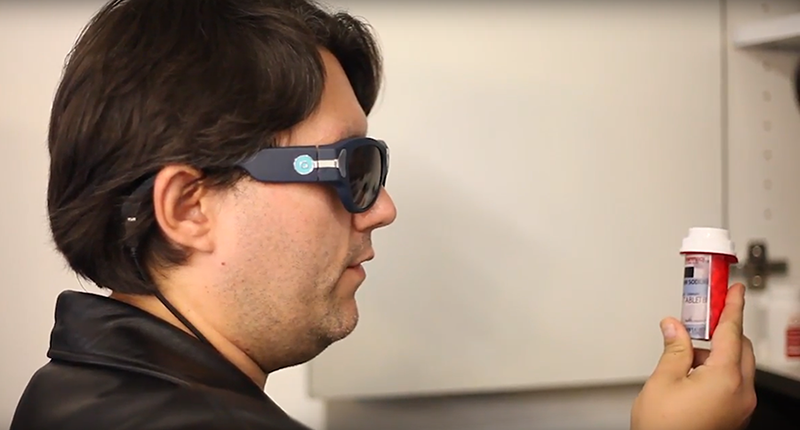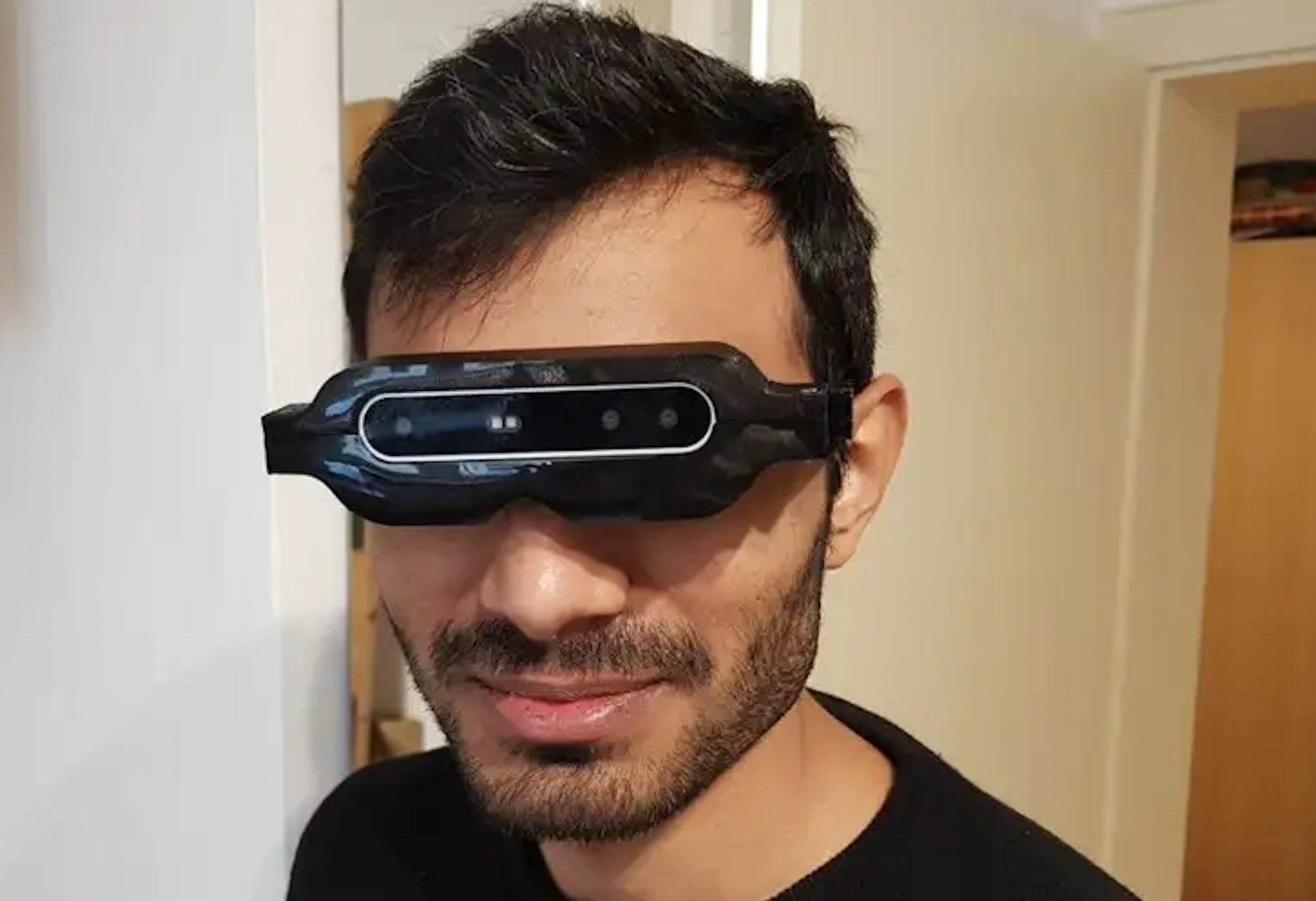Wearable Technology for Low Vision: Making Daily Life Easier
Wearable Technology for Low Vision: Making Daily Life Easier
Blog Article
Discover Cutting-edge Tools Designed for the Aesthetically Damaged
The advancement of ingenious devices for the visually damaged represents a substantial innovation in availability and independence. Technologies such as wise glasses with AI abilities and mobile applications created to supply auditory summaries are improving day-to-day experiences for individuals. Additionally, wearable devices that use haptic responses improve ecological understanding, while modern-day Braille technologies provide new methods to involve with message. As these devices remain to evolve, their effect on the lives of those with aesthetic problems increases vital questions concerning the future of inclusivity and freedom in various facets of life. What lies ahead in this technological landscape?
Smart Glasses for Navigation

Smart glasses developed for navigating are transforming the way visually impaired people connect with their setting. These innovative devices utilize a mix of cam innovation, synthetic knowledge, and acoustic responses to give real-time details about environments. By using challenge detection systems, wise glasses can inform individuals to potential dangers, allowing more secure wheelchair in both strange and acquainted setups.
The integration of GPS innovation further boosts navigation capacities, permitting users to obtain acoustic instructions as they relocate. This hands-free method not just fosters freedom yet additionally encourages aesthetically damaged people to navigate urban landscapes with boosted self-confidence. In addition, many clever glasses are geared up with attributes that recognize spots and road indications, giving contextual details that improves the customer experience.
In addition, the growth of these gadgets is consistently progressing, with companies functioning to enhance the precision of things acknowledgment and broaden the array of navigational functions. As clever glasses come to be extra cost effective and easily accessible, they hold the prospective to substantially change everyday life for aesthetically impaired customers. Ultimately, these innovative devices stand for a critical step towards inclusivity, offering boosted movement and a better feeling of freedom for individuals navigating the world around them.

Mobile Apps for Daily Living
Just how can mobile applications enhance the day-to-day lives of aesthetically damaged individuals? Mobile apps are revolutionizing the method aesthetically impaired individuals browse their atmospheres, take care of day-to-day tasks, and accessibility details. These applications give necessary assistance via numerous capabilities, cultivating freedom and improving quality of life.
Several ingenious mobile apps are made specifically for daily living. Applications like Be My Eyes connect visually damaged users with sighted volunteers through video clip telephone calls, allowing them to get real-time assistance with jobs such as reviewing tags or browsing unfamiliar rooms. Likewise, Seeing AI, developed by Microsoft, uses expert system to define surroundings, read text, and determine things, efficiently changing a smart device into a powerful device for daily aid.
Additionally, navigating apps tailored for the visually impaired, such as Aira and BlindSquare, use audio-based instructions and ecological details, allowing users to traverse their environments securely and confidently. Past navigating and prompt assistance, mobile applications likewise support organization and task monitoring, with attributes that aid individuals establish pointers, develop order of business, and track visits. In summary, mobile applications act as crucial sources, equipping aesthetically damaged people to lead more independent and meeting lives.
Wearable Technologies for Support
Empowerment via innovation is progressively obvious in the world of wearable gadgets made to help visually damaged people. These link cutting-edge tools integrate flawlessly right into every day life, improving navigating and supplying vital feedback to users. For instance, wise glasses geared up with cameras can check out and acknowledge faces text out loud, enabling customers to engage more with confidence in social and specialist setups.
An additional notable improvement is making use of haptic feedback systems in wearable devices. These systems use resonances or other responsive signals to convey information regarding the user's environment, such as barriers or changes in surface, improving movement and safety. Wearable innovations likewise consist of wristbands that attach to smart devices, informing individuals to notices via refined resonances, hence improving connection without dependence on aesthetic cues.
As these technologies continue to advance, they are not just enhancing read independence for aesthetically damaged people but likewise fostering a greater sense of incorporation in culture. By bridging the space between obstacles dealt with in day-to-day living and the possibility for freedom, wearable technologies function as crucial devices in the mission for equality and empowerment for those with aesthetic problems.
Sound Description Devices
Sound description tools play a vital function in enhancing accessibility for visually damaged people, supplying them with the ability to involve with visual media. OCR devices for the blind. These tools supply narrated summaries of essential visual elements in films, tv shows, and live efficiencies, guaranteeing that users can totally understand the context and emotions conveyed via visuals
Sound description can be integrated into different platforms, consisting of streaming services, movie theater screenings, and live cinema. Numerous popular streaming services now consist of audio summary as an access feature, allowing audiences to pick it quickly. Along with conventional media, specialized apps also exist, supplying audio descriptions for art exhibitions, museums, and other cultural events.
The performance of audio summary hinges on the skill of the narrators, that should communicate aesthetic information succinctly without interfering with the original sound. Innovations in this field are also leading the way for even more tailored experiences, where users can readjust the level of detail and pacing according to their preferences.
Braille Innovations and Tools
Braille technologies and gadgets have actually significantly transformed the means visually damaged people connect with text and information. Modern innovations have led to the advancement of versatile devices that enhance proficiency and self-reliance amongst users. Notably, Braille present modern technologies have progressed, allowing for dynamic analysis experiences. These tools transform digital message into Braille, allowing customers to access a huge array of info on mobile phones, computer systems, and tablet computers.
Moreover, portable Braille notetakers combine standard Braille input with modern performances, assisting in note-taking, scheduling, and file modifying on the go. Mobility aids go to the website for visually impaired users. These portable devices commonly include text-to-speech capabilities, bridging the gap in between Braille and acoustic details
Additionally, ingenious Braille printers have actually arised, allowing customers to produce Braille labels, papers, and academic materials successfully. This ease of access fosters better engagement in educational and professional environments, inevitably advertising inclusivity.
Moreover, research study into clever Braille innovations remains to broaden. Tools that include expert system are being checked out to give real-time navigating aid and contextual info, improving the user experience in varied settings. Overall, these developments reflect a dedication to encouraging visually damaged individuals via technology, guaranteeing they can quickly gain access to and engage with the globe around them.

Verdict
The advancement of cutting-edge devices for the visually impaired dramatically boosts independence and lifestyle. Smart glasses, mobile applications, wearable technologies, audio description devices, and Braille developments jointly equip individuals by providing essential navigation help, ecological recognition, and improved analysis experiences. These innovations not just foster better addition however likewise promote autonomy in daily tasks, inevitably adding to an extra equitable and easily accessible society for aesthetically damaged people. Proceeded advancement in this area holds assurance for more enhancements.
As smart glasses come to be a lot more affordable and accessible, they hold the prospective to significantly transform everyday life for visually damaged users. Mobile apps are changing the way aesthetically impaired users browse their settings, take care of daily jobs, and access details. Apps like Be My Eyes attach visually impaired users with sighted volunteers by means of video clip calls, enabling them to obtain real-time aid with tasks such as reviewing tags or browsing strange rooms.Additionally, navigating applications tailored for the visually damaged, such as Aira and BlindSquare, offer audio-based directions and ecological info, making it possible for customers to traverse their environments safely and with confidence.The advancement of innovative tools for the aesthetically damaged significantly enhances freedom and high quality of life.
Report this page